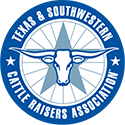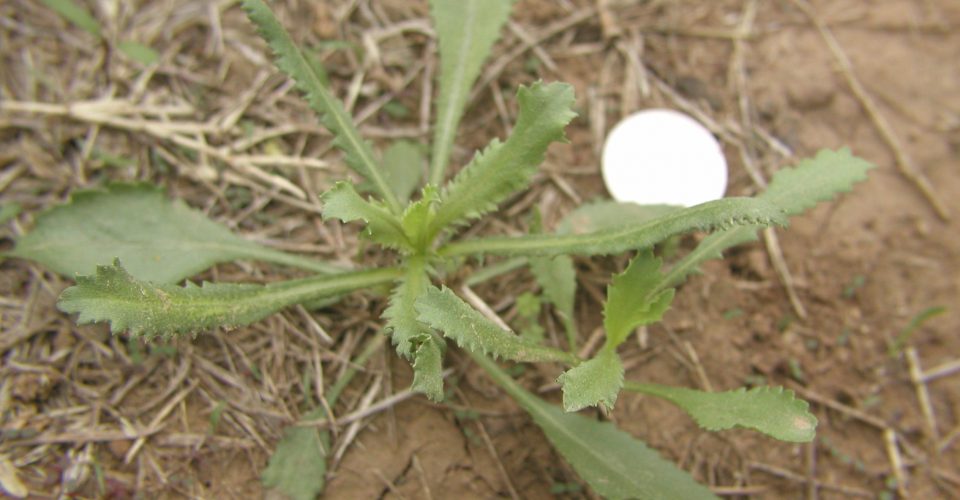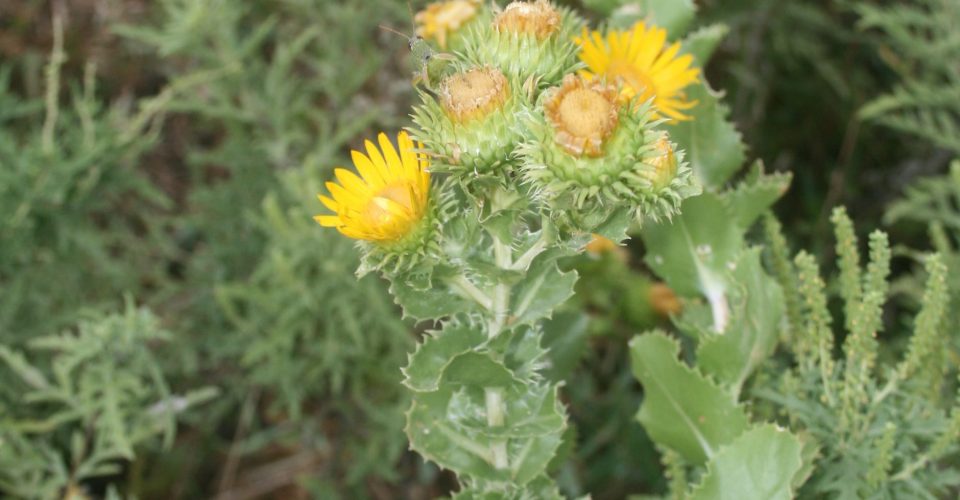Curlycup gumweed (Grindelia squarrosa)
Curlycup gumweed is a biennial or short-lived perennial forb.
It can be found in various soil types throughout the United States and Mexico, but seems to prefer dry limestone soils. Also known as curlytop gumweed, it often proliferates on overgrazed ranges, disturbed areas, rights of way and roadsides.
- Can reach a height of 40 inches.
- Has alternating leaves that are thick, smooth, shiny gray-green, very sticky and toothed as they clasp the stem. The leaves are generally ovate to oblong, reach a length of two inches, and become smaller towards the top of the plant.
- Yellow flowers are numerous, 1/2 to 1 inch in diameter and supported by cups with small sticky, curved bracts that curve downward.
- Was known to be of great value to early settlers and Native Americans as medicine for asthma, bronchitis and saddle sores.
Curlycup gumweed has very little value to livestock, deer or antelope; but quail, dove and songbirds eat the seeds. It is utilized by many pollinator species when the yellow flowers bloom late into the summer months.
Keeping a good dense turf of perennial grasses and avoiding overgrazing can prevent curlycup gumweed. It can be controlled by a timely application of herbicides if it becomes an issue in pastures.
Editor’s note: Kent Ferguson, retired rangeland management specialist from USDA Natural Resources Conservation Service (NRCS), is providing us with plant identification photo stories to help ranchers identify those forbs, forages and species growing in the pastures. Additional photos provided by USDA NRCS.
Curlycup Gumweed is excerpted from the July 2016 issue of The Cattleman magazine.



